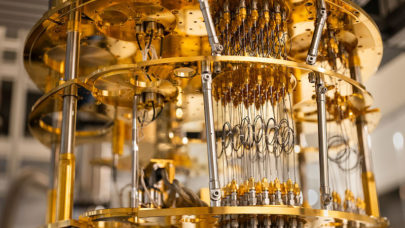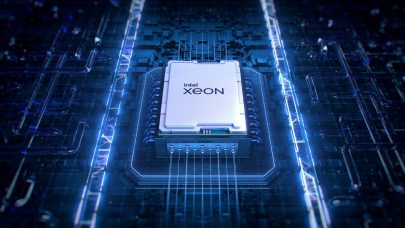Those of you looking forward to Rock — Sun’s much anticipated 16-core processor originally scheduled for release later this year but now pushed to the second half of 2009 — don’t have to wait for those chips to come out to experience that launch party euphoria. This week Sun and Fujitsu announced the latest of their enterprise line of SPARC-based servers, sporting the new SPARC64 VII chip. If you’re a visual learner, Sun has a video to get you started. Go ahead and click…I’ll wait.
The new chip, which itself was originally due in mid-2006, is the quad-core “Jupiter” processor designed to replaced the dual-core 2.4 GHz “Olympus” processor. These chips are designed by Fujitsu and used in SPARC Enterprise Servers sold by both Sun and Fujitsu-Siemens starting in April 2007. A process technology shrink from 90nm to 65nm has allowed the hardware makers to cram twice the number of cores into a socket with only a 12 percent increase in the total power consumption under load — 135 watts, up from 120 watts. Accounting for the new cores and the performance increase from the clock bump, Sun is talking about a 44 percent decrease in power consumption per core.
While both the Olympus and Jupiter chips support two threads per core, the threading model has changed from something called “vertical multithreading” to “simultaneous multithreading” in a move that Sun and Fujitsu claim allows applications to actually capture the performance benefits you’re supposed to see from multithreading. While user experience will be the real test here, we do know that this chip is starting off with a memory disadvantage: a move down from 6 MB of L2 cache per core in the Olympus to 6 MB of L2 per socket in the new chip.
Sun and Fujitsu are positioning these SMP servers for the enterprise Unix market and for HPC. In the mid range this means the M4000 and M5000, mid-range boxes that run the Jupiter chips at 2.4 GHz. The M4000 is a four-socket, 6U chassis machine with up to 128GB of memory. The M5000 is an eight-socket, 10U chassis with up to 256GB of memory. The high end M8000 and M9000 servers are available at 2.4 and 2.52 GHz, but plans for the chip have it eventually running at up to 2.7 GHz. The 9000 is the big boy, with 64 sockets and 2 TB of memory in a dual-rack configuration. That translates into 256 cores (512 threads) per box, which is one of the largest SMP machines on the planet. The M8000 supports up to 16 sockets and 512 GB of memory.
Sun claims the new chip brings an 80 percent performance boost on commercial software (think SAP and Oracle) and up to 200 percent on “HPC workloads” compared to their previous generation. From what I can divine from a series of press releases and the technical data posted on Sun’s Web site, they’re basing this on the Linpack benchmark on the HPC side. According to the results, a fully loaded M9000 server, equipped with 64 quad-core SPARC64 VII processors running at 2.52 GHz , and running Sun Studio 12 software on top of Solaris 10, delivered a Linpack score just north of 2 teraflops.
As described on a Sun Web page blog, they pitted the M9000 server described above against a 5 GHz IBM Power 595 with 32 sockets — the largest IBM makes The new M9000 bested the Power 595 by a factor of two, which is not too surprising since the SPARC server runs four times as many cores as the Power 595, although at half the speed. The M9000 also beat out the 64-socket Itanium-based HP Superdome by a factor of 2.7. But clearly your mileage will vary based on what the SPARC64 VII can do with your workloads, especially if your apps are memory bound.
There is an interesting upgrade path from the SPARC64 VI to the VII. Fujitsu designed the motherboards to support both chips sitting side by side on the motherboard, each running at its native clock rate, not at the clock of the slowest chip, as you might expect. This means that you can crack open an existing SPARC64 VI-based server and upgrade only a single socket if that’s all you have the time, money, or requirements to justify.
Although they are positioning the new systems for large scale enterprise server applications and HPC, they clearly have a long way to go getting this processor deployed in HPC environments. As one measure of Sun’s penetration with this process into the HPC space, there are zero systems on the TOP500 that use a SPARC processor.


























































